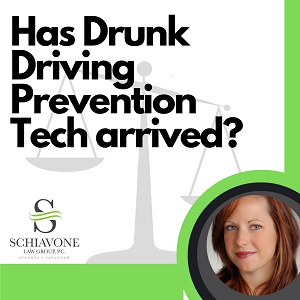Drunk Driving Prevention Technology
 The National Highway Traffic Safety Administration announced in December that it has taken the first steps to make drunk driving prevention technology standard in all new passenger vehicles in the United States.
The National Highway Traffic Safety Administration announced in December that it has taken the first steps to make drunk driving prevention technology standard in all new passenger vehicles in the United States.
First Steps
This first step is called an advance notice of proposed rulemaking. It is a part of the long process in creating a new set of federal regulations for automakers in the United States. They will begin by researching the drunk driving prevention technology that is currently available and come up with a standard of guidelines for automakers to follow. They will also research whether the technology is effective enough to prevent impaired driving, and if there are legal pitfalls or hurdles to creating these rules. This was part of an Infrastructure Law passed by Congress in 2021.
Passive Technology
According to Reuters and Wired Magazine, some of the technology being tested includes air sensors that can pick up alcohol on a person’s breath, eye tracking devices that monitor a driver’s concentration, touch sensors that can scan for alcohol in the blood, and steering sensors that pick up on erratic driving. All of these are considered passive technology, which means they would not require the driver to “pass a test” in order to start the car, like the current Ignition Interlock Device.
Of course, this technology may be a long way off. And, one thing they also want to prevent is false positives. For example, is a passenger setting off the breath sensors, instead of the driver? Or what if the person is drowsy and swerving, not drunk? And of course, there will be some questions if this is within the rights of a regulator to prevent someone from driving? What kind of privacy rights might this implicate? How much will this technology drive up the costs of new vehicles?
This technology has been researched for a long time and driver assisting systems are already very common in new cars. Now, the technology will be extended to serve an additional purpose, preventing impaired driving. Even though it may be months or years before the technology is researched enough to become standard, it could change driving in the United States drastically.
Stay Tuned
For now, stay tuned to see how drunk driving prevention technology develops. And as always, Schiavone Law is here to help you if you, or someone you are dealing with DUI charges.
